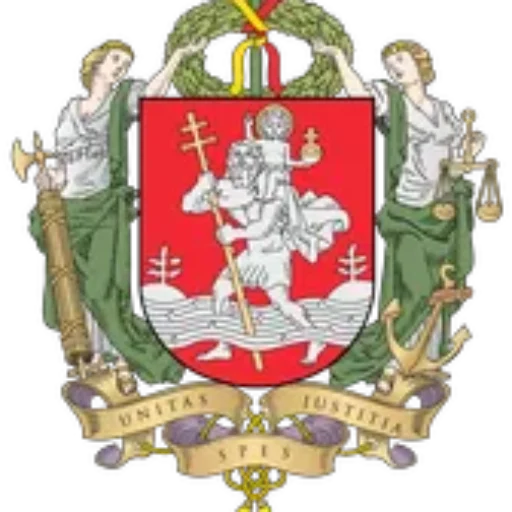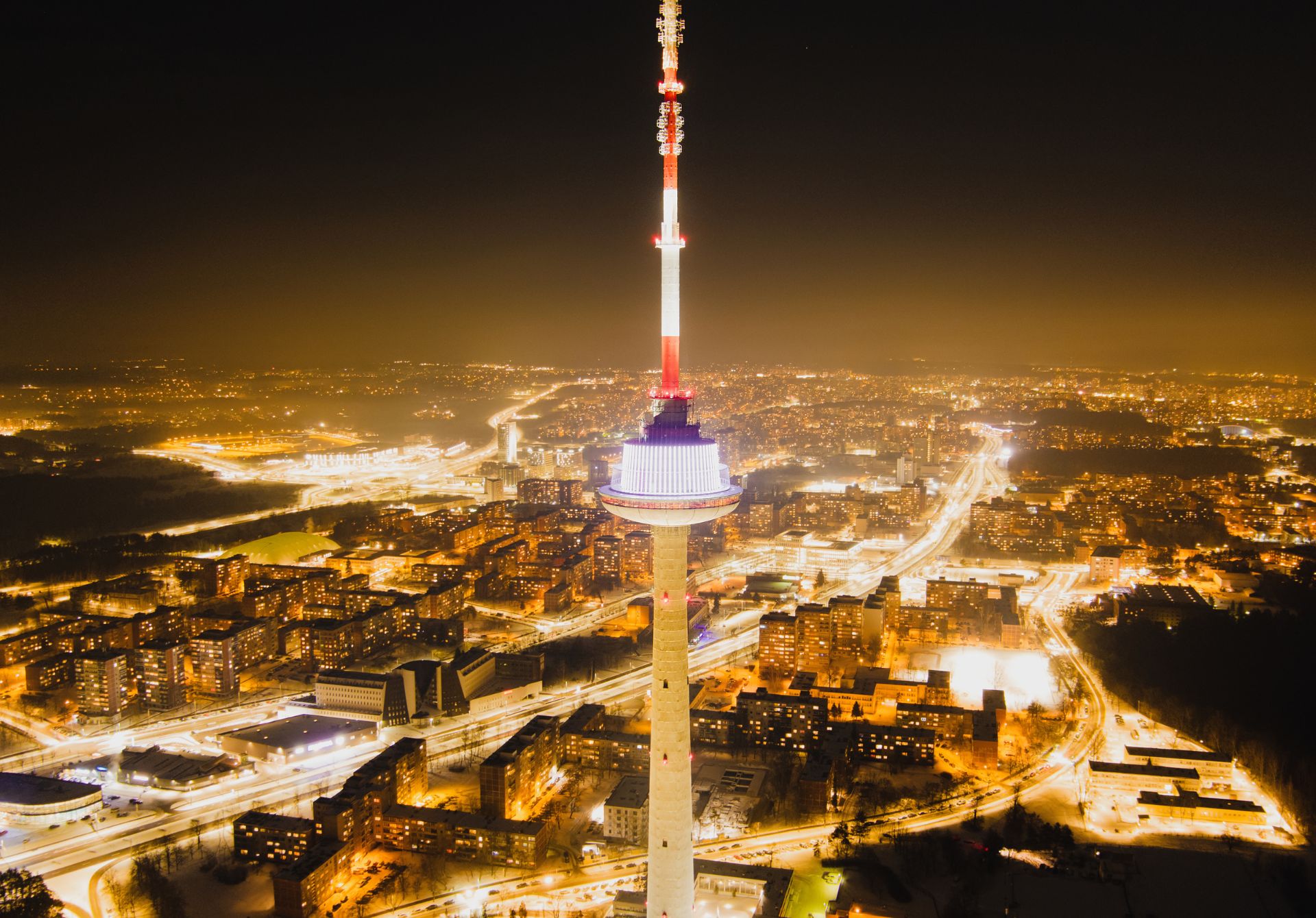Towering over the Lithuanian capital, the Vilnius TV Tower stands as a testament to both technological advancement and national pride. This iconic structure, rising 326.5 meters (1,071 feet) into the sky, is not just a broadcasting facility but also a significant landmark that has played a crucial role in Lithuania’s history and continues to be a popular tourist attraction.
History and Construction
The Vilnius TV Tower was constructed between 1974 and 1980, during the Soviet era. At the time of its completion, it was the 7th tallest tower in the world and the tallest structure in Lithuania. The tower was designed by V. Obydov and the construction was supervised by K. Balėnas.
The tower’s unique design features a massive concrete shaft supporting a steel frame structure that houses technical equipment and a rotating restaurant. The design was not only functional but also aimed to showcase the technological prowess of the Soviet Union.
Technical Specifications
The TV Tower’s impressive height is complemented by its technical capabilities:
- Total height: 326.5 meters (1,071 feet)
- Observation deck height: 165 meters (541 feet)
- Rotating restaurant diameter: 19 meters (62 feet)
- Foundation depth: 8.25 meters (27 feet)
- Weight of the entire structure: 25,000 tons
The tower’s primary function is to broadcast television and radio signals, covering a radius of about 75 kilometers (47 miles). It utilizes advanced broadcasting technology to ensure clear transmission across the region.
Historical Significance
The January Events of 1991
The Vilnius TV Tower gained international attention during the January Events of 1991, a critical moment in Lithuania’s struggle for independence from the Soviet Union. On January 13, 1991, Soviet troops attempted to seize control of the tower, resulting in a clash with unarmed Lithuanian civilians who had gathered to protect it.
Tragically, 14 civilians were killed and hundreds were injured during this confrontation. This event became a pivotal moment in Lithuania’s fight for independence, galvanizing international support for the country’s sovereignty. Today, a memorial near the tower honors those who lost their lives, serving as a powerful reminder of the price of freedom.
Tourism and Cultural Impact
Observation Deck and Rotating Restaurant
The TV Tower has become one of Vilnius’ most popular tourist attractions. Visitors can ascend to the observation deck at 165 meters, offering breathtaking panoramic views of the city and surrounding landscape. On clear days, visibility can extend up to 50 kilometers (31 miles).
The rotating restaurant, named “Paukščių takas” (Milky Way), is located just below the observation deck. It completes a full rotation every 45 minutes, providing diners with an ever-changing view of the cityscape while they enjoy their meal.
Cultural Events and Celebrations
The tower has become an integral part of Vilnius’ cultural landscape. It is often illuminated for special occasions and holidays, creating stunning visual displays visible across the city. During Christmas, the entire tower is transformed into a giant Christmas tree, claimed to be the tallest in Europe.
Technological Advancements and Future Plans
As broadcasting technology evolves, so does the TV Tower. In recent years, the tower has undergone several upgrades to its broadcasting equipment, ensuring it remains at the forefront of digital transmission technology. Plans are underway to further modernize the visitor experience, including interactive exhibits about the tower’s history and the science behind broadcasting.
Environmental Considerations
In line with global trends towards sustainability, efforts have been made to reduce the tower’s environmental impact. Energy-efficient lighting systems have been installed, and there are ongoing studies to explore the potential for integrating renewable energy sources into the tower’s operations.
The Vilnius TV Tower stands as more than just a broadcasting facility; it is a symbol of Lithuania’s resilience, technological progress, and cultural identity. From its role in the country’s struggle for independence to its current status as a beloved tourist attraction, the tower continues to play a significant part in the life of Vilnius and Lithuania as a whole.
As it looks towards the future, the TV Tower remains committed to embracing new technologies while honoring its historical legacy. For visitors and residents alike, it offers a unique perspective on Vilnius – both literally from its observation deck and figuratively as a testament to the city’s past, present, and future. The Vilnius TV Tower is not just a landmark; it’s a living piece of history that continues to inspire and connect people, much like the signals it broadcasts across the Lithuanian sky.

